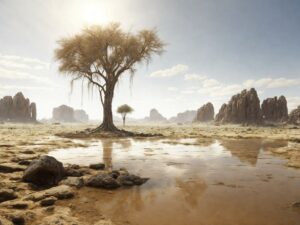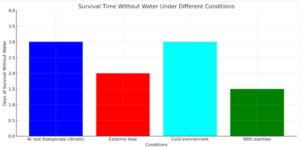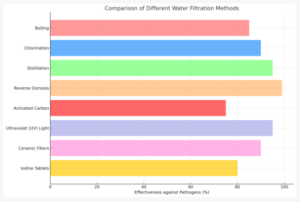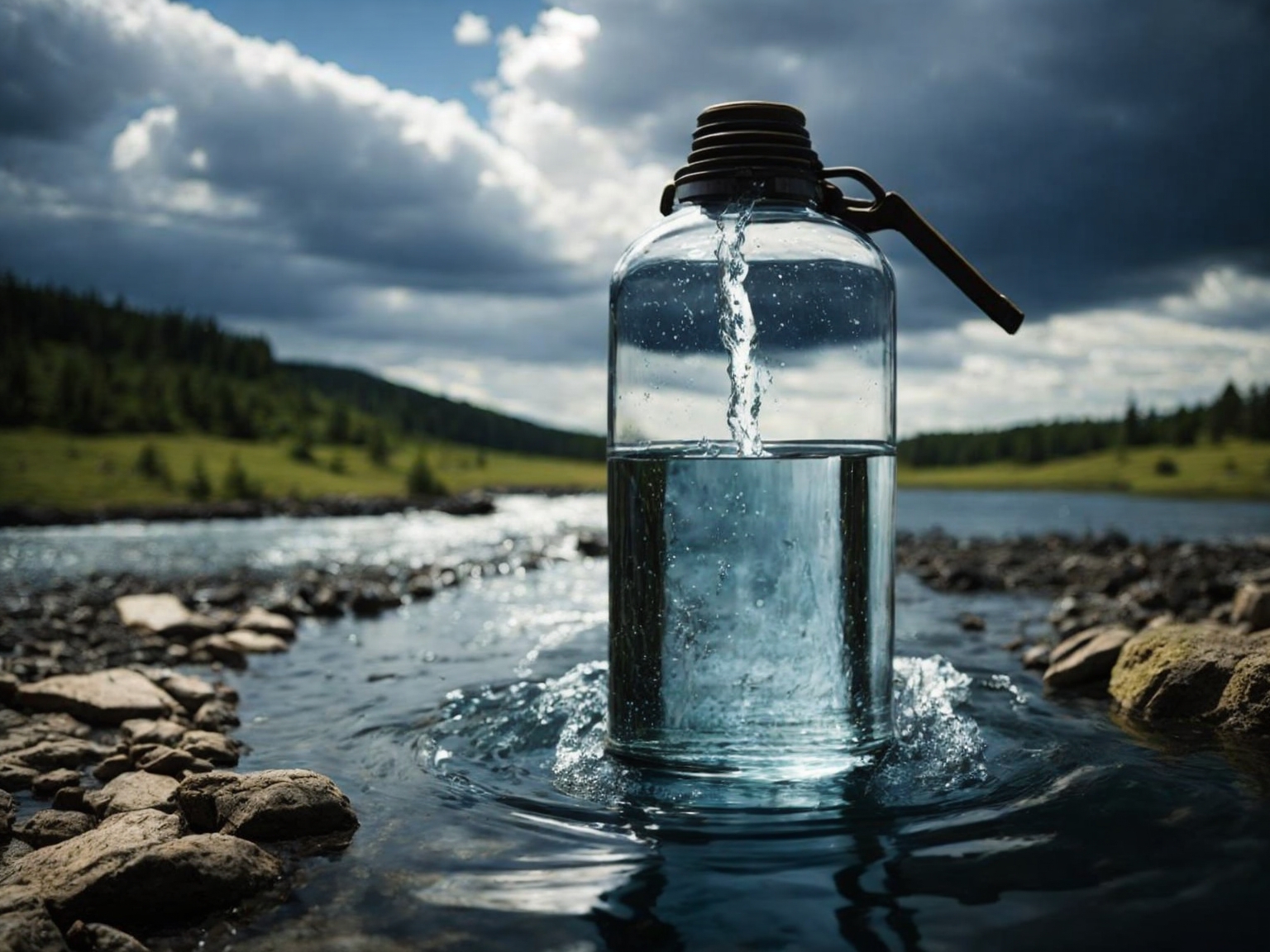
How Much Water Do You Really Need?
Every individual’s water needs can vary based on several factors including age, climate, and physical activity. On average, a normally active person needs about one gallon of water each day for drinking and sanitation. However, in hotter climates or during strenuous activity, this amount of water can double. It’s essential to drink water regularly to replace the daily water loss from sweat, urine, and breath.What’s the Minimum Amount of Water Per Day to Survive?
In dire situations, a person can survive on half their usual water intake for an extended period. However, it’s not advisable. The minimum amount of water per day to maintain vital functions is about one quart. But remember, this is the bare minimum. For optimal health and survival, aim for a gallon of water per person, per day.Why Is Drinking Enough Water Crucial?
Water plays a pivotal role in maintaining body temperature, removing waste, and supporting all of the body’s functions. Without enough water, the body begins to dehydrate, leading to fatigue, dizziness, and more severe health issues. Always ensure you drink enough water to keep your body functioning optimally.How Many Days Can You Last Without Drinking Water?
The human body can last about three to five days without water. However, this varies based on individual health, age, and environmental conditions. Always prioritize finding a source of water in emergency situations to avoid the risk of dehydration.Here’s the visualization for “Survival Time Without Water Under Different Conditions”:

- In a temperate climate while at rest, an individual can survive approximately 3 days without water.
- In extreme heat, this time reduces to about 2 days.
- In a cold environment, the survival time remains around 3 days, but there are other risks like hypothermia.
- With continuous exertion, the survival time decreases significantly to approximately 1.5 days.
- Never ration water if you have enough. Drink what you need today and search for more tomorrow.
- Minimize physical activity to reduce the amount of water your body needs.
- Stay cool and find shade to reduce water loss from sweating.
Discovering the Importance of Water for Long-Term Survival
Water is not just for drinking. In long-term survival situations, you also need water for sanitation, hygiene, and food preparation. Here’s a list of essential items for natural disaster situations:- Commercially bottled water
- Food-grade water storage containers
- Water purification tablets or liquid household chlorine bleach
- Portable water filters
- Manual can opener for canned liquids
Here’s a visualization comparing the effectiveness of different water filtration methods against pathogens:
 Reverse Osmosis stands out as one of the most effective methods, offering close to 99% effectiveness against pathogens.
Boiling and Activated Carbon, while popular, have slightly lower effectiveness rates.
Ultraviolet (UV) Light and Distillation also demonstrate high efficacy in purifying water.
This chart offers readers a clear perspective on which water purification methods are most reliable, especially in survival scenarios where access to clean water is paramount.
Reverse Osmosis stands out as one of the most effective methods, offering close to 99% effectiveness against pathogens.
Boiling and Activated Carbon, while popular, have slightly lower effectiveness rates.
Ultraviolet (UV) Light and Distillation also demonstrate high efficacy in purifying water.
This chart offers readers a clear perspective on which water purification methods are most reliable, especially in survival scenarios where access to clean water is paramount.
Emergency Water Supplies: What Should You Have?
A well-prepared emergency kit should have a minimum amount of water per person for at least three days. This includes both drinking and sanitation. Store your water in a cool, dark place and regularly check for any signs of contamination.Finding Water in an Emergency Situation
If you run out of stored water, don’t panic. There are several ways to find water in the wilderness. Check out this guide on the search for clean water in the wilderness for detailed tips.The Dangers of Dehydration: What Happens If You Don’t Drink Enough?
Dehydration can lead to severe health issues, including kidney problems, seizures, and even death. Symptoms include thirst, dark urine, and fatigue. Always ensure you drink enough water to avoid these complications.How Much Water Is Needed For Survival?
| Situation | Amount of Water |
|---|---|
| Daily needs for an average person | 1 gallon |
| Hot climates or strenuous activity | 2 gallons |
| Minimum for survival | 1 quart |
Discovering the Importance of Water for Long-Term Survival
- Emergency preparedness tools and kits
- Bottled water reserves
- Water purification tablets and filters
- Knowledge of natural water sources
- Sanitation supplies
Storing Water: Best Practices and Tips
Storing water is crucial for emergency preparedness. Ensure you have a supply of water that lasts at least three days. Use food-grade water storage containers and replace the water every six months. For more tips on water storage, check out this article on drought survival.What Items Should I Include in My Bug Out Bag for a Survival Situation?
Having the right bug out bag essentials is crucial for any survival situation. Some items to include are a reliable multi-tool, first aid supplies, water purification tablets, non-perishable food, a emergency blanket, a flashlight, extra batteries, a portable phone charger, a whistle, and a map of the area. These essential items can help you stay prepared and survive in challenging conditions.
Key Takeaways:
- The average person needs about one gallon of water per day.
- In emergencies, a person can survive on half their usual water intake for an extended period.
- Always prioritize finding a source of water in emergency situations.
- Store water in food-grade containers and replace every six months.
FAQs:
- What’s the minimum amount of water I need daily? One gallon for an average person.
- How long can I survive without water? About three to five days, but it’s not advisable.
- How do I store water for emergencies? Use food-grade containers and replace the water every six months.
- Drought Survival 101
- Survival Foods & Self-Reliance Tips for Beginners
- The Best Water Bottles for Survival
I’m Alex, the author behind True Survivalist. As a survival enthusiast myself, I’ve created this website to serve as a valuable resource for fellow survivalists and preppers. Whether it’s understanding survival situations, emergency preparedness, or finding the right survival gear, I’ve got you covered. Through a series of informative guides, I aim to provide answers to commonly asked questions, debunk common myths, and help you avoid common mistakes. At True Survivalist, I believe in equipping you with the knowledge and tools you need to be prepared for any survival scenario. Join me on this journey of self-reliance and resilience.
